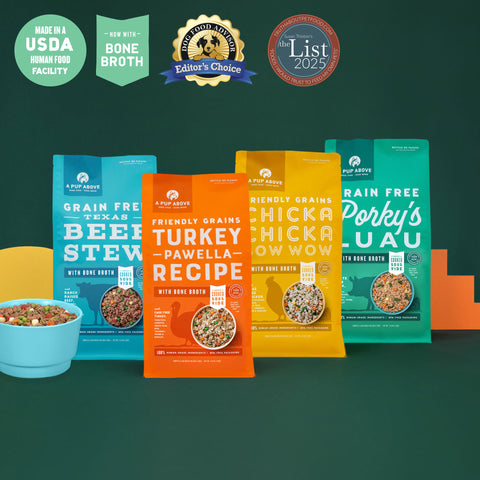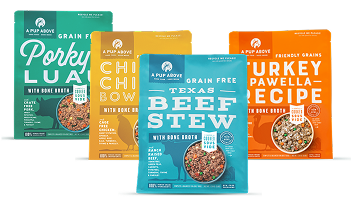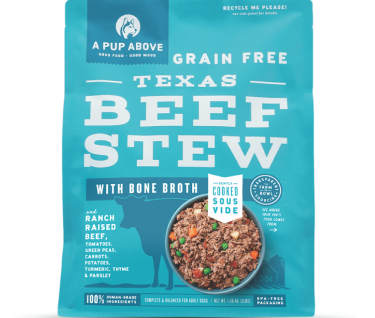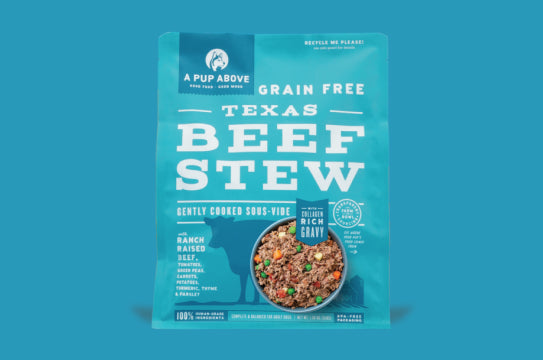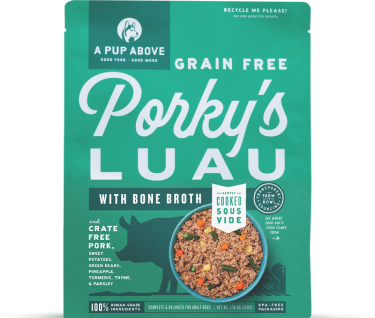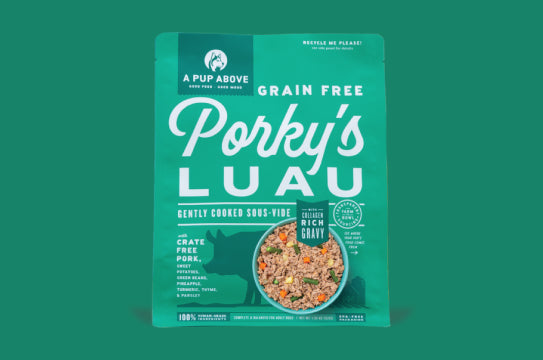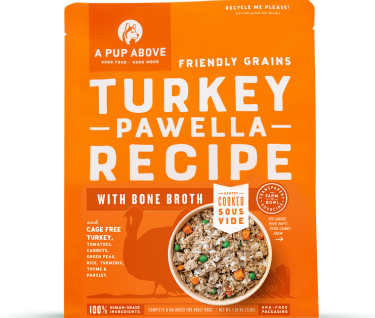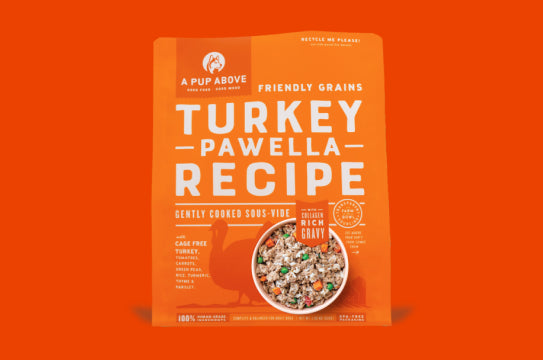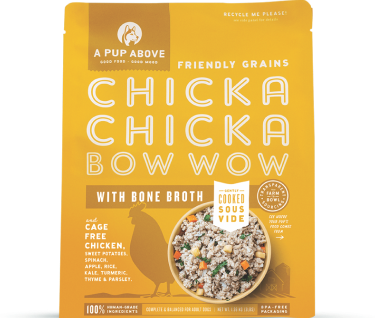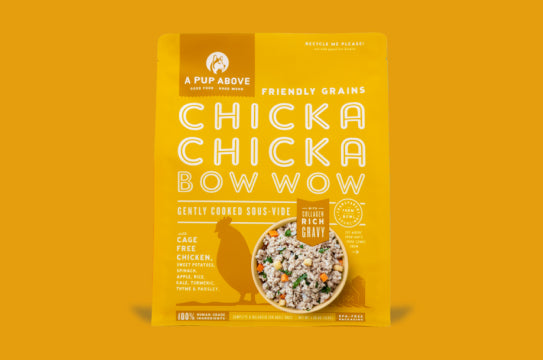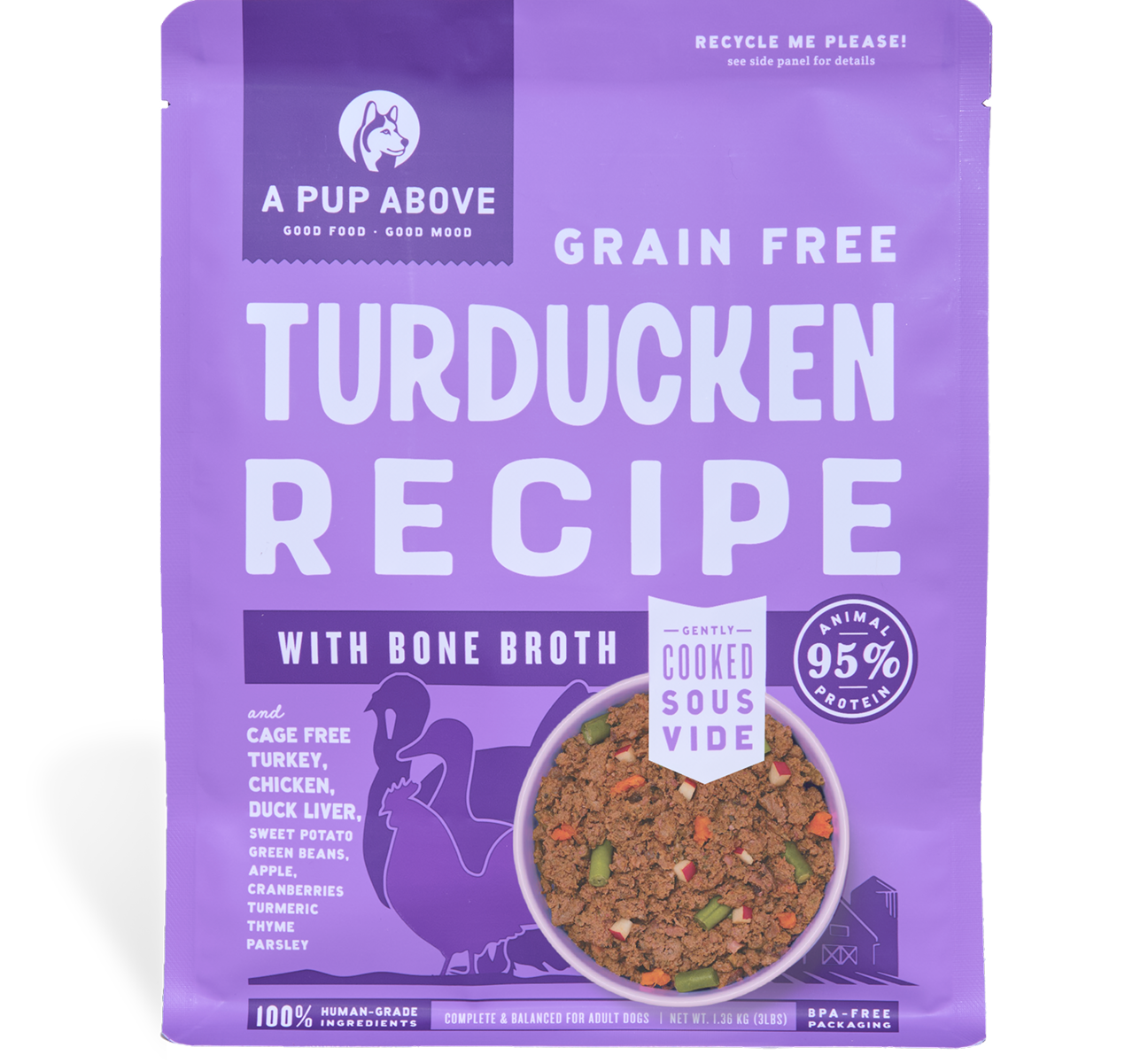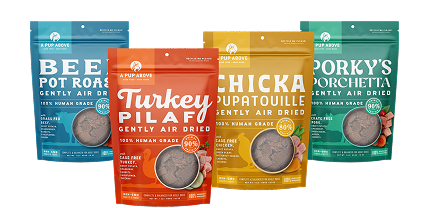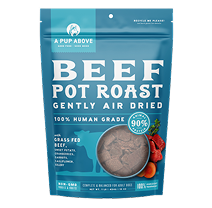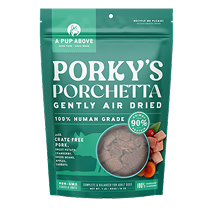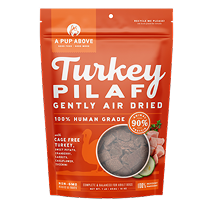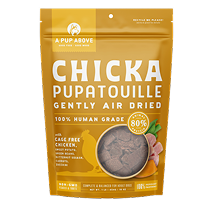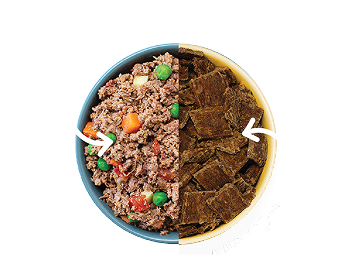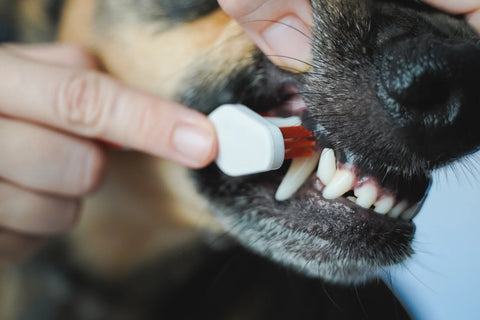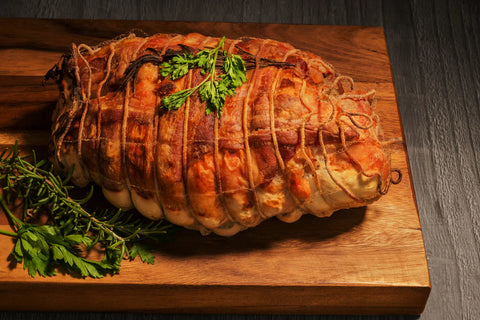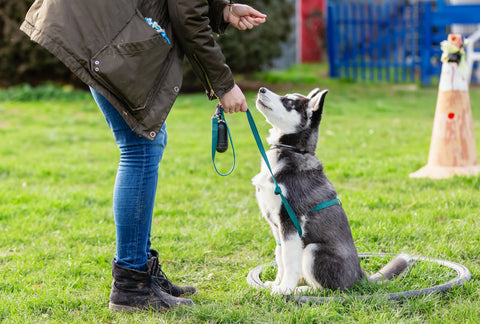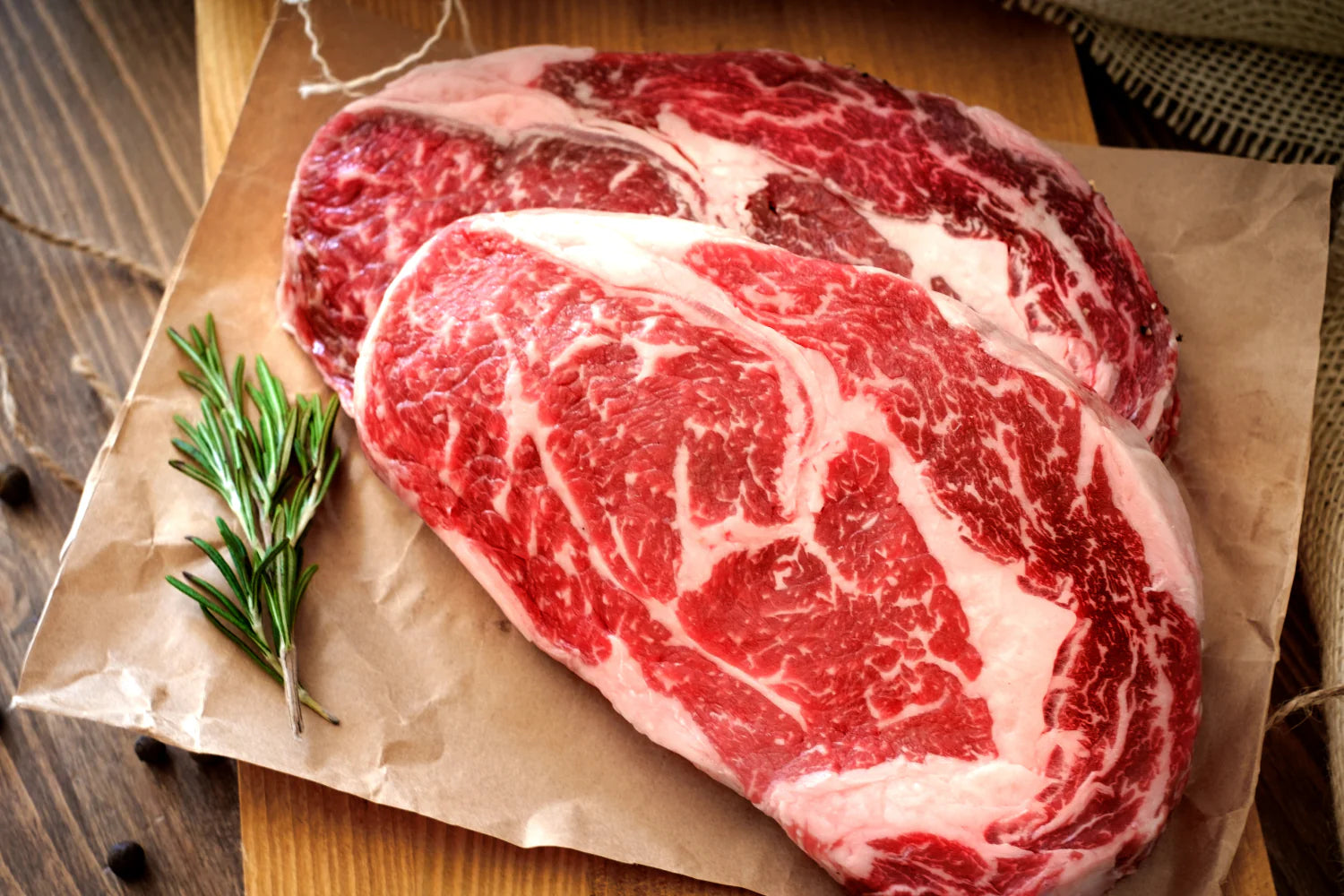
Can Dogs Eat Steak (& Steak Fat)?
Key Takeaways:
- Steak is a powerhouse protein source for dogs, providing essential amino acids for muscle growth, healthy skin, and a shiny coat. It’s also rich in iron, B vitamins, zinc, and omega-3s, supporting energy, immune health, joint care, and more. These nutrients help fuel everything from playtime to overall wellness.
- However, while steak itself has some solid nutritional benefits, the fat that comes with it isn’t great for dogs. It’s also loaded with calories and can be a little too much for your dog’s digestive system to handle.
- The right amount of steak depends on your dog’s size, age, and activity level, but a good rule of thumb is to keep treats (including steak) to about 10% of their total daily calories.
If you’re grilling up a steak, chances are your dog is watching every move, giving you those big, hopeful eyes. We get it — steak smells amazing, and sharing a bite feels like the ultimate way to spoil your pup. But is it a good idea?
Before you start slicing off a piece for your pup, it’s worth knowing which parts of a steak are dog-friendly, what to avoid, and how much is too much. At A Pup Above, we’re all about keeping our dogs healthy and happy, so let’s break down whether this juicy treat really belongs in your dog’s bowl.
Is Steak Good for Dogs?
Steak is a cut of beef taken from the muscle of a cow, known for its rich flavor, meaty texture, and high protein content. It’s a staple in human diets, but when it comes to our four-legged friends, there’s a bit more to consider.
First, the good news: steak is packed with high-quality protein, which dogs need for muscle growth, energy, and overall health. It’s also loaded with essential amino acids, the building blocks of strong muscles, healthy skin, and a shiny coat. Plus, it’s a natural source of iron, which helps keep your dog’s red blood cells in top shape, supporting stamina and energy.
Steak also brings B vitamins to the table, like B12, B6, and niacin, which support everything from brain function to nerve health and metabolism. These vitamins help turn that juicy steak into usable fuel for all the zoomies, tail wags, and epic fetch sessions.
Then there’s zinc, which supports immune health, wound healing, and coat quality, making it a nice perk for thick-coated pups who need a little extra skin support. And if you’re serving up grass-fed steak, your pup will get a dose of omega-3 fatty acids, which support joint health, brain function, and overall wellness as they age.
Should Dogs Eat Steak Fat?
Now for the not-so-good news. While steak itself has some solid nutritional benefits, the fat that comes with it isn’t exactly a jackpot for dogs. Sure, it’s packed with flavor, but it’s also loaded with calories and can be a little too much for your dog’s digestive system to handle.
Fat is calorie-dense, meaning even a small piece can add up quickly. It’s also harder to digest, which can lead to upset stomachs, loose stools, or even more serious digestive issues if your dog isn’t used to it. Not to mention, too much fat over time can lead to weight gain, which brings its own set of problems, like joint strain and decreased energy.
Another thing to keep in mind is that cooked steak fat can be greasy and messy, which might be fine if you’re cool with a little cleanup, but not so great if your dog decides to rub their greasy face on the couch. So, while a little steak fat here and there probably won’t hurt, it’s not the kind of thing you want to make a habit of.
How Much Steak Can I Feed My Dog?
Wondering how much steak is actually okay to share with your dog? It’s a fair question, especially if your pup’s been eyeing your plate like it holds the secrets to the universe. The good news is that a little bit of lean, unseasoned steak can make a great occasional treat, but moderation is key.
The right amount depends on your dog’s size, age, and activity level, but a good rule of thumb is to keep treats (including steak) to about 10% of their total daily calories. For a smaller dog, that might just be a couple of small bites, while a larger dog might handle a few more without it throwing off their diet.
Remember, steak is a protein boost, not a meal replacement. If you’re feeding steak regularly, make sure it’s part of a balanced diet that covers all their nutritional bases. And if you’re not sure what that balance looks like, a quick chat with your vet can help you figure out the right portion size for your pup.
What Kind of Steak Should Dogs Not Eat?
Not all steaks are created equal when it comes to dogs. While plain, unseasoned cuts can be a solid protein pick, some types of steak are better left off the menu. For starters, anything heavily marbled or extra fatty (think ribeye or T-bone) can be a bit too much for your dog’s stomach.
Then there’s the seasoning factor. Steaks are often marinated or rubbed with ingredients like garlic, onion, or chives, which can be toxic to dogs even in small amounts.
These alliums can damage your dog’s red blood cells, potentially leading to anemia if eaten in large enough quantities. Salt is another one to watch out for, as too much can mess with your dog’s electrolytes and put a strain on their kidneys.
Also, avoid any steak that’s been cooked with added sauces or spices. That pepper-crusted sirloin or spicy Cajun ribeye might be a hit at the dinner table, but it’s a hard no for your dog. Their stomachs just aren’t built to handle those kinds of flavors, and the side effects can range from mild discomfort to a full-blown emergency vet visit.
When in doubt, stick to plain, lean cuts like sirloin or round steak, and skip the seasoning. Your dog won’t mind — they’re mostly in it for the meat anyway.
What’s the Best Kind of Protein for a Dog?
We’ve talked about steak, but is it the best protein for your dog? It’s a solid choice, but it’s not the only option — and honestly, some dogs do better on other proteins. At A Pup Above, we like to mix things up with a variety of high-quality, human-grade meats, because we know every dog is different (and picky eaters are real).
Beef
If your dog’s the type to do a full body wiggle when the grill comes out, beef is probably their vibe. It’s packed with essential amino acids, iron, and B vitamins, which help keep their muscles strong, their energy up, and their overall health in check.
You’ll find ranch-raised beef in our Texas Beef Stew recipe, paired with nutrient-rich veggies like carrots, green peas, and potatoes for a balanced bite.
Pork
Pork is another solid choice, and it’s a favorite for dogs who like a little more flavor in their bowl. It’s a natural source of thiamine (a B vitamin that supports brain function and energy), plus zinc and selenium. We use juicy pork in Porky’s Luau, mixed with sweet potatoes, green beans, and a hint of pineapple for a naturally sweet, island-inspired meal.
Turkey
If your dog’s a little more on the lean, athletic side (or just loves to chase squirrels like it’s their full-time job), turkey is a great option. It’s lighter, easier to digest, and packed with essential amino acids and B vitamins. You’ll find it in our Turkey Pawella recipe, paired with friendly grains like rice and nutrient-rich veggies like tomatoes and carrots.
Chicken
Some dogs just go wild for chicken, and we get it. It’s lean, easy on the stomach, and packed with all the essential amino acids dogs need. We use free-range chicken in Chicka Chicka Bow Wow, along with superfoods like kale, spinach, and turmeric for a little extra health boost.
At the end of the day, the best protein for your dog depends on their unique needs and taste preferences. Whether they’re a beef lover, a turkey fan, or a pork enthusiast, a little variety can go a long way in keeping their bowl exciting.
FAQs
What meat can dogs not eat?
It’s best to avoid giving dogs fatty meats, such as ham or poultry skin, as these high-fat options can trigger acute pancreatitis — a serious, potentially life-threatening condition. Instead of offering these as treats, it’s safer to discard them.
Can dogs eat steak bones?
Yes, raw steak bones are generally safe for dogs to eat, but cooked steak bones should be avoided. Cooked bones are more likely to splinter and cause harm to your dog's digestive system.
What is the most toxic thing a dog can eat?
There are several things you should avoid feeding to your pup. The most toxic things a dog can eat are grapes and raisins, alcohol, xylitol, and chocolate. These substances can cause serious health issues, including kidney failure, vomiting, seizures, and even death.
So, Can Dogs Eat Steak?
The short answer is yes, but it’s all about balance. Steak can be a tasty, protein-packed treat for your pup when it’s lean, unseasoned, and served in moderation. But if you’re looking for a more complete, everyday protein option that’s as tasty as it is nutritious, we’ve got you covered.
At A Pup Above, we believe in feeding our dogs the good stuff — real, whole, human-grade meats gently cooked using the sous-vide method to lock in flavor and nutrients. It’s a simple way to make sure your dog is getting the protein, vitamins, and minerals they need, without the guesswork.
Ready to level up your pup’s bowl? Check out our full lineup of fresh, nutrient-packed recipes and see the difference high-quality, real food can make.
Sources:
The Complete Protein Foods List And Facts | Piedmont Healthcare
Amino Acid: Benefits & Food Sources | Cleveland Clinic
Dietary Fats | American Heart Association
People Food Dogs Can Eat and Can’t Eat | American Kennel Club
Top Stories

Why Do Dogs Lick Their Paws?

Why Do Dogs Whimper & Make Noises in Their Sleep?

Healthy Vet-Approved Homemade Dog Food Recipes

How To Cook Sweet Potatoes for Dogs
